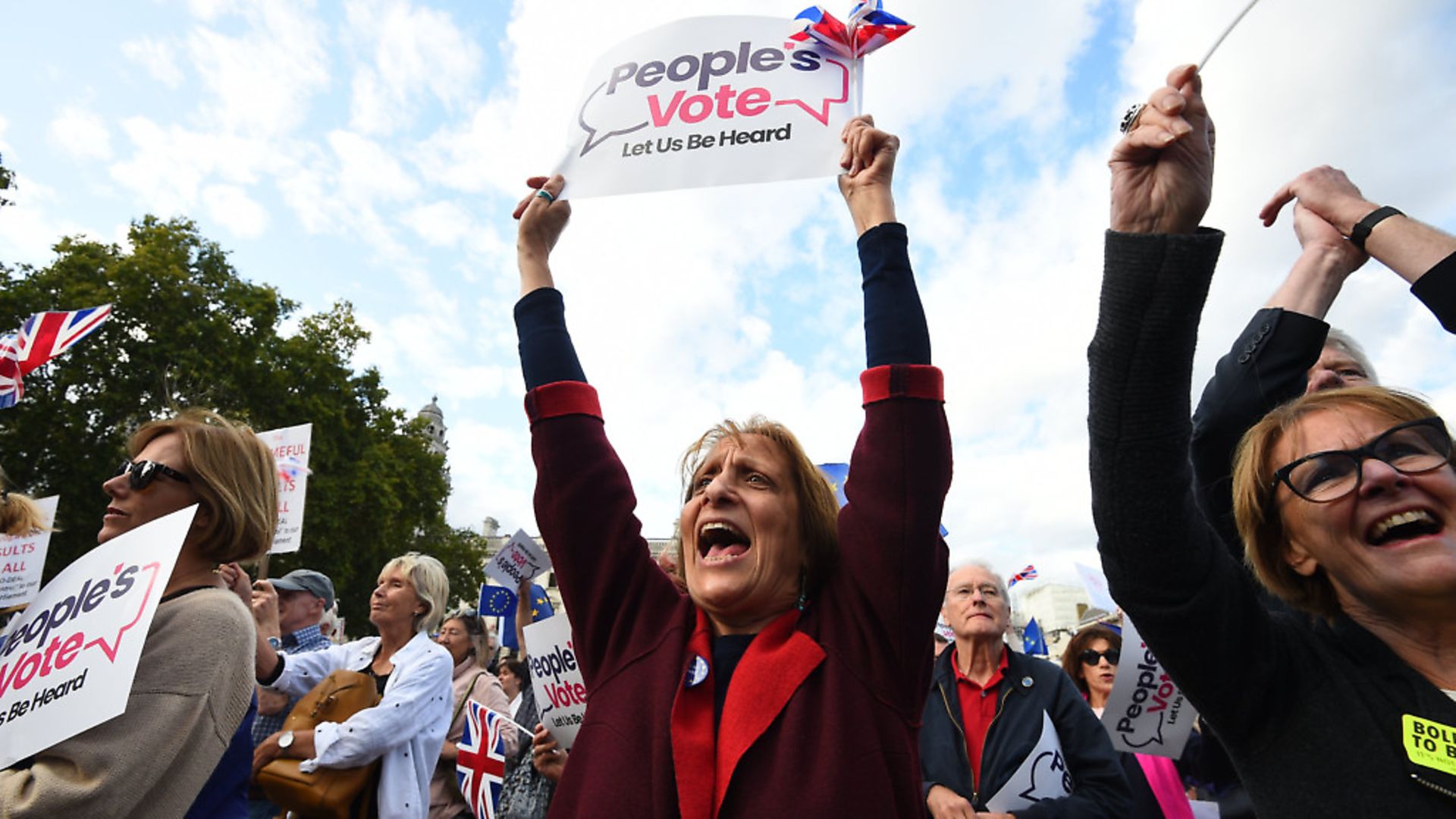
A new referendum on Brexit is now practically inevitable. But what exactly should the question on the ballot paper be, asks AC GRAYLING.
It is common cause among all – and ‘all’ means the ever-increasing majority – who want a second referendum to be held, that ‘Remain’ must be one of the options on the ballot paper.
The burning question is: what should the other question or questions be? I say ‘questions’ plural, because some people argue that there should be a three-way choice among Remain, a deal (if some sort of new Withdrawal Agreement is struck) and no deal. This, they argue, could be done with a preferential voting system in which voters number their preferences 1, 2 and perhaps 3 also.
Those who say – rightly – that a three-way question is a recipe for disastrous muddle and inconclusiveness, have the problem of identifying what, in a two-way ballot, the Leave option should be. What if there is still no deal, but there is a referendum to test whether the electorate still wish a Brexit to occur?
One possibility is that the question should simply be, “Do you wish to remain in the EU or do you wish a Brexit process to continue?” with the options being “YES: Remain” or “NO: Continue to seek a Brexit”.
The problem with this is that it obscures the sharp difference between those who wish for a Brexit to happen but only with a deal; those who want Brexit whether or not there is a deal; and those who do not want any deal but what they call a ‘clean break’.
There are no such difficulties for the Remain side of the argument. Their view is that membership of the EU, although it is a work in progress requiring development and improvement, is an enormous benefit to the UK and all member states, not least in the opportunities for prosperity and the realities of peace that it brings. For them a straight ‘Remain’ option is all that is required.
As everyone knows, the wording of a question can influence voters significantly; they might vote ‘yes’ if the wording is one way, ‘no’ if it is another. The ballot paper for the second referendum should therefore have a guidance note which says: “The purpose of this ballot is to test whether the UK electorate now wishes to Remain in the EU or to Leave the EU.” This states neutrally and factually what the referendum is doing, namely, seeing whether – after all the debates and information of the last three years – the view of the electorate is the same or has changed.
But as we have learned, a simple ‘Leave’ answer does not provide an unquestionable mandate for the numerous paths that can result. I propose the following solution to the question of what choices should be offered. The ballot paper should read as follows, after the above guidance note:
REMAIN [ ]
LEAVE [ ]
IF AND ONLY IF you chose LEAVE above, choose ONE of the following options:
Leave only with a deal, not otherwise [ ]
Leave with no deal only if a deal is not achieved [ ]
Leave with no deal, without seeking a deal [ ]
Referendums are crude devices, and do not belong in representative democracies. But given that a referendum is by far the best way out of the Brexit impasse, this suggestion digs a little deeper into the variety and complexity of Leaver views. The tripartite supplementary question for Leavers gives a better indication of what the Leave part of the country wants, so that if there is a majority for Leave in the main question, the government knows what the electorate thinks about options for the way forward.
It is vital that the ballot paper be shown to the public repeatedly over the weeks before the day of the referendum, so that they are familiar with its appearance and the questions on it. It is also vital that full and clear explanations are given as to why it has that form, and what the significance of answers to the supplementary questions is.
Steps have to be taken to ensure that the referendum is not subverted by the manipulative techniques used in the 2016 referendum, and that spending limits are observed by the official participating parties. In the 2016 referendum people were targeted with so-called ‘dark advertising’ on social media: having had their personal details harvested without their knowledge, they were targeted with claims and falsehoods that only they saw, so that others could not challenge the falsehoods and answer the propaganda being deployed.
The franchise for the referendum should cover everyone who has a material interest in the outcome from the point of view of their residency and future in the UK, or as UK citizens abroad. The case for including 16- and 17-year-olds and fellow EU citizens from other EU countries who live and pay their taxes in the UK, was unanswerably made in the 2014 Scottish independence referendum, and should apply in this case too.
The timing of this second referendum is also important.
It would be best if it came before a general election, to clear away once for all the question whether we are to continue with a Brexit process or not, so that the ensuing general election can be about substantive issues of real importance to our country.
But if there is an election first, the opposition parties must so combine their efforts that at very least there is a hung parliament which will legislate for a referendum as a condition of any support, or ‘confidence and supply’, to any administration.
Warning: Illegal string offset 'link_id' in /mnt/storage/stage/www/wp-includes/bookmark.php on line 357
Notice: Trying to get property 'link_id' of non-object in /mnt/storage/stage/www/wp-includes/bookmark.php on line 37






